Chava and Zenia
The friendship of two young writers from Lodz who survived the Holocaust and achieved very different kinds of literary fame
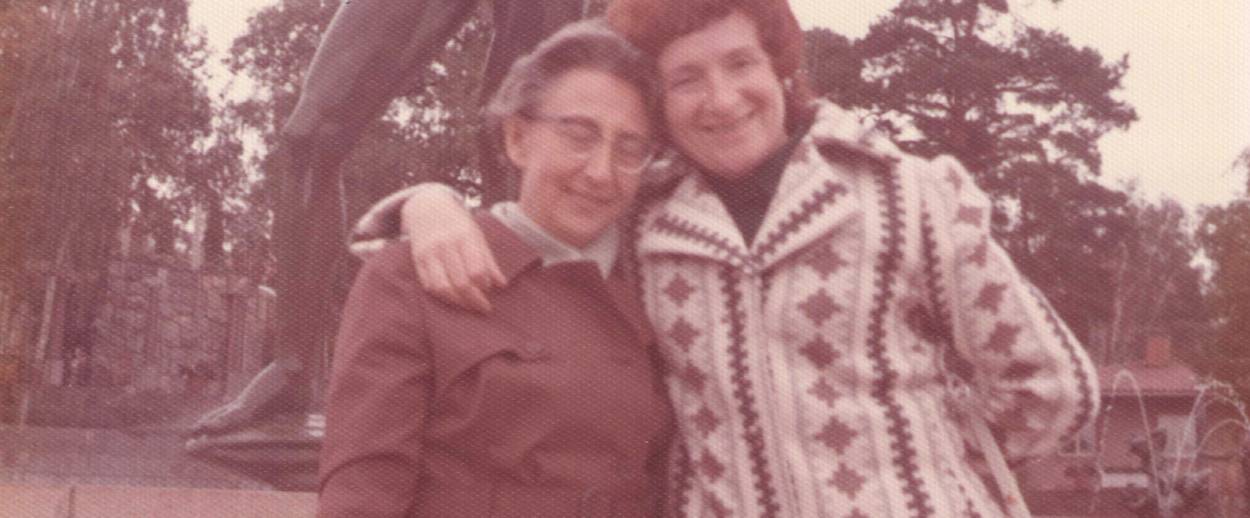



My mother’s best friend when she was growing up in Poland in the 1930s was Zenia Marcinkowska. Zenia would grow up to be an acclaimed novelist in Sweden under the name Zenia Larsson. My mother would also become a writer, the Yiddish novelist Chava Rosenfarb. So this is the story of the correspondence between two writers, both women, both born in Lodz, Poland, both survivors of the Holocaust. Neither writer is particularly well-known today, because they wrote in languages that have relatively few readers, Zenia in Swedish, Chava in Yiddish.
Let me begin with Zenia, whose trilogy about the Lodz ghetto, published in Swedish between 1960 and 1962 received great acclaim, because it was one of the first accounts of the Holocaust to be published in Sweden. Zenia’s trilogy became required reading for an entire generation of Swedes and was for many of them their first introduction to the horrors that the Jews had lived through during World War II.
Of the two women, Zenia was the older by one year, having been born in 1922. By the time she died in 2007, she had authored ten books, most of them novels. Yet despite her literary prominence in Sweden in the 1960s, ’70s and ’80s, she seems to be very little known there today and I have had a hard time finding out what happened to her papers after her death. However, I do know quite a lot about her life until the early 1970s, because she figures prominently in the memoirs and letters of Chava Rosenfarb, the Canadian writer who wrote in Yiddish and whose first published novel was also a trilogy about the Lodz ghetto.
For the past few years, I have been working on a biography of my mother’s life. During the course of my research, I came across a stash of letters written in Polish that were not, as might be expected, letters by Zenia to Chava, but rather Chava’s own letters to Zenia. The first of these letters is dated December 1945—that is, eight months after the two women’s liberation at Bergen-Belsen in April 1945—and the last is dated 1971. Zenia’s original letters to Chava I do not have, nor can I find where in Sweden they might be archived—assuming they are archived at all. What I do have is a book that Zenia published in Swedish in 1972 called Letters from a New Reality that gives her side of the correspondence. All the original correspondence was in Polish, because, unlike Chava, Zenia never went to a Yiddish-language Tsisho school in Lodz, so, while she understood Yiddish and could read it, she was far more comfortable writing in Polish. In order to publish her book she translated her own letters from Polish into Swedish.
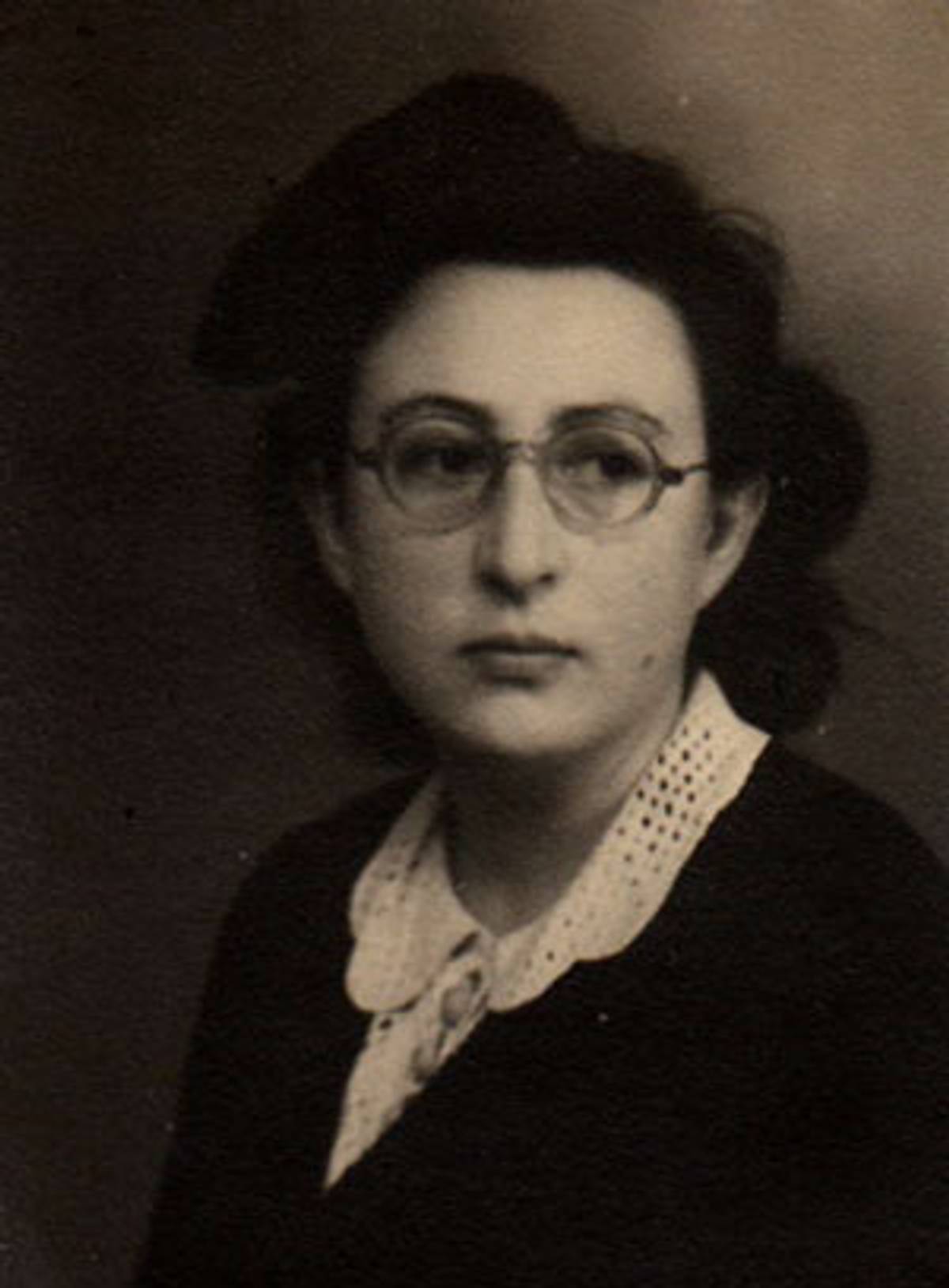
The origin of Letters from a New Reality is this: In 1970 Zenia’s Swedish publisher asked her if she had any letters about her early experiences as a Holocaust survivor in Sweden. The Swedish rescue of Jewish Holocaust survivors in 1945 had been the largest such humanitarian undertaking by Sweden up to that time and it meant that a country whose population had been largely homogenous had to learn to accommodate a large group of traumatized foreigners who did not speak its language and whose religion was not Christianity. Zenia’s publisher wanted to commemorate the 25th anniversary of the event by publishing a book of letters by one of the best known of the rescued survivors, Zenia Larsson. Since the only person with whom Zenia had corresponded after settling in Stockholm after the war was Chava, Zenia asked Chava for her letters back, that they might be translated into Swedish and published. Chava, hurt by the request and not knowing the reason behind it, asked for her own letters back and that is how I come to have them.
Because I know neither Polish nor Swedish, I had to have Chava’s letters and Zenia’s book translated, so all the quotations that follow are the work of two translators, Krzysztof Majer from Polish to English, and Sylvia Soderland from Swedish to English. I am grateful to them both, because without their work I would never have known the story of this friendship. But the need for translation also underlines the complicated linguistic reality in which many Holocaust survivors lived after the war and which also determined the literary fates of the two women writers. I met Zenia only once, when I was a teenager on a trip to Europe with my parents. I remember her as a dark, slight, rather fragile-looking woman to whom I could not speak because she did not know English. Her Swedish husband made a greater impression on me because his English was fluent and we could converse—an example of how even memory has its linguistic component.
Zenia published Letters from a New Reality (in Swedish: Brev Fran En Ny Verk Lighet) in 1972. It is a very strange book. For one thing, the names have been changed. My mother’s very Jewish name Chava has become the very Swedish name Linn. My father’s name has morphed from the biblical Henekh to the non-descript Gover. My own name is changed from Goldie—the name I was given in honor of my grandmother who perished at Auschwitz—to Sandy. Why the changes? I have no idea. It might have been to protect the identity of my family or to circumvent libel laws. But even so, why give us such non-Jewish names? Equally puzzling is the fact that while some names are changed, others are not. The well-known Yiddish poet, Rokhl Korn, who stopped in Sweden on her way to resettlement in Montreal, is referred to by her actual name.
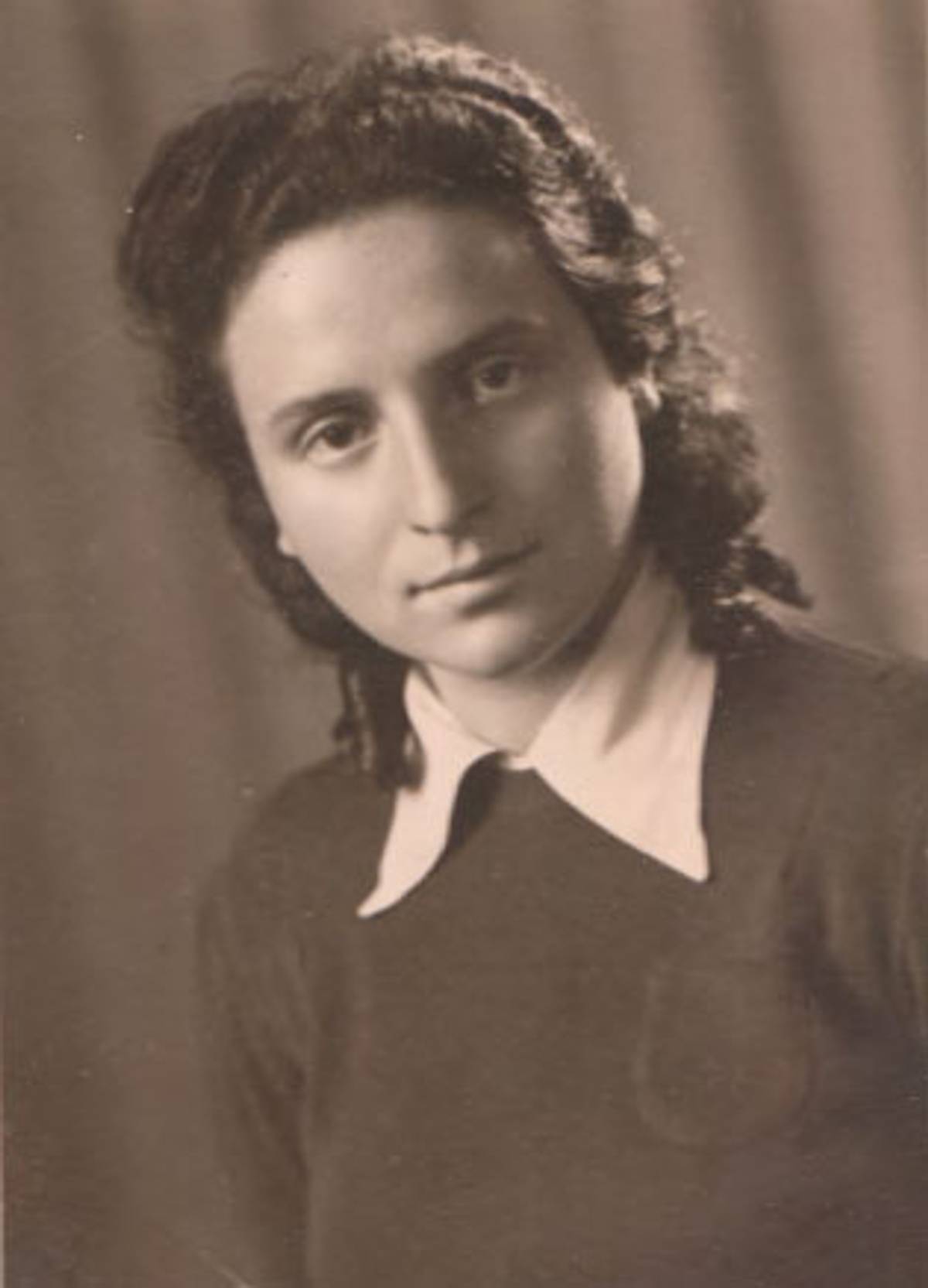
Zenia’s only comment on the name changes occurs in the introduction to her book. “Sometimes,” she writes, “it was necessary to change proper names, or replace them with a letter,” as she does with the name of the ghetto poet Simkha-Bunim Shayevitch, who becomes merely the letter “S” in her book. She adds: “The letters are addressed to Linn—that in real life she has another name is of no consequence.”
Other changes are equally puzzling. For instance, Zenia describes Chava as a flaming redhead with brown eyes. This is, in fact, a description of my aunt, Chava’s younger sister. Chava was a brunette with hazel eyes. Nor can this simply be an honest mistake on Zenia’s part, because she and Chava were too close for too long. They saw each other regularly during the four and a half years they and their families were imprisoned in the Lodz ghetto. It was Chava who discovered the body of Zenia’s father, who had committed suicide in order that his wife and daughter receive his food rations. When the Nazis liquidated the ghetto in August 1944, Zenia and her stepmother joined Chava’s family in hiding in a second room in the Rosenfarbs’ flat that was hidden behind a dresser; they were deported to Auschwitz together, passed the selection together and then worked together in a forced labor camp at Sasel before finally being liberated at Bergen-Belsen. As Zenia reminds Chava in one of her letters, “We always made up the same group of five at roll-call in the camps.” It is simply not possible that Zenia forgot Chava’s hair color. Later in her book, Zenia implies that Linn—that is, Chava—is living in Australia, rather than in Canada.
As if all these changes were not puzzling enough, Zenia’s book ends very oddly, with a letter to an unidentified Swedish writer colleague that has no bearing on anything that has gone before and no further explanation of why the correspondence with Linn ends in 1971, nor of what happened to the two correspondents. There are undoubtedly other distortions and changes that Zenia’s letters underwent in being prepared for publication, not least in the translation from Polish to Swedish. It is almost as if Zenia is equally torn between the impulse to conceal and the urge to reveal.
Yet for all the distortions, I do believe that Zenia’s book, which gives only her side of the correspondence, is a valuable document, especially when set beside Chava’s own letters, because taken together the book and the letters chronicle the lives of two female Jewish writers, who lived through the horrors of the Holocaust together and then experienced the alienating reality of having to adjust to new lives in their adoptive countries.
Taken as a whole, the letters delineate an intense, if ambivalent, friendship—“the deep friendship of soulmates,” as Zenia puts it—especially in the early years, before time and distance and Zenia’s request for the return of her letters slowly estranged the two women from one another. They have much in common, not least similar artistic and literary aspirations. And then there is the fact of having just lived through one of the Jewish world’s greatest catastrophes.
The early letters of both women are filled with requests for information. Who of their acquaintance has survived? Where are they living? Chava is particularly anxious to get in touch with her former Latin teacher, who she believes is in Sweden. It takes a few years, but Zenia finally tracks down the teacher recuperating in a Stockholm hospital and eventually comes up with a mailing address.
Not surprisingly, many of the early letters are suffused with despair and a strong sense of alienation. Chava, in particular, is unsettled and her letters chronicle the anxiety of her statelessness. During the period from December 1945, when the first letters are exchanged, until 1950, she and her family are living illegally in Belgium. They must emigrate in five years. Where should they go? What country will take them?
On Zenia’s side, the letters are full of anxiety about fitting into her new country of Sweden. She is 23 years old when she arrives in 1945. She needs to learn Swedish, but there are no Swedish language classes for the new arrivals. She must find a job to support herself. The only jobs on offer are factory work, house cleaning, or working as a hospital orderly. There is no understanding of her wish to continue her schooling. In the meantime, she is totally alone and without resources.
She washes dishes to make money; she does odd jobs. But what she really wants is to study sculpture. She applies to the Swedish Academy of Art and is turned down. The Academy only accepts three applicants out of a hundred. They think she is talented, but not yet ready. Moreover, she does not speak Swedish. How will she understand the instruction? It will take another attempt before she is admitted.
The adjustment to life in a new country is initially harder for Zenia, who lost her beloved stepmother in the aftermath of the liberation at Bergen-Belsen. Zenia has no other family. “I am totally, utterly alone,” she writes in her first letter to Chava. When she trips and falls while crossing a busy Stockholm street and is nearly run over by a car, she writes that perhaps it would have been better if the driver had not braked in time, because there would be no one to miss her, no one to know that she is gone. She writes: “In order to live, people need some kind of stable ground under their feet, a bit of warmth, a home. But with me, my home is floating somewhere on air.”
Also, because she left Bergen-Belsen DP camp as part of a Swedish government initiative to resettle Holocaust survivors, Zenia was kept for several weeks in quarantine in a detention camp in a small town in northern Sweden, and, as she writes, “imprisoned again,” after first being subjected to “all kinds of baths and disinfections and only after thorough medical examinations finally allowed to settle in Sweden.”
Chava, on the other hand, was luckier—if one may use such a word without irony in this context. Both her mother and her younger sister survived the war. She was also reunited with her prewar boyfriend, Henekh Morgentaler, who had survived Auschwitz and Dachau and come looking for her in Bergen-Belsen. From him, she learned that her father was dead, killed when the Allies bombed the train on which inmates were being transported from Dachau deeper into Germany. So, with the exception of her father, Chava survived the war with her immediate family intact.
With her father dead, there was no more reason for Chava, her mother, and sister to remain in Germany, because, as she put it, “the German soil burned under our feet.” The problem was where to go? No country seemed willing to accept these “insignificant leftovers of a dead nation.”
Eventually the Bund—the socialist political organization to which both Chava’s and Zenia’s parents belonged—organized illegal border crossings into Belgium. The survivors were smuggled into that country like an “unwelcome cargo of goods” (Zenia’s words). Chava, her mother, and sister make it to Brussels, where they settle, living first in a rented attic with one bed, in which they all sleep, eventually finding work and starting to return to life. In this way too Chava is luckier than Zenia. Not only does she have most of her immediate family with her, but there are members of the Bund in Brussels who are eager to help and provide support. And because, unlike Zenia, she is not “rescued” by any government, she does not have to submit to quarantines or other bureaucratic restrictions. On the other hand, she has no right to stay in Belgium and her identity papers are marked with the stamp “doit émigrer,” must emigrate. For the next four years, her letters to Zenia will be filled with various plans for emigration, with applications to America, to Uruguay, to Argentina, and finally, successfully, to Canada.
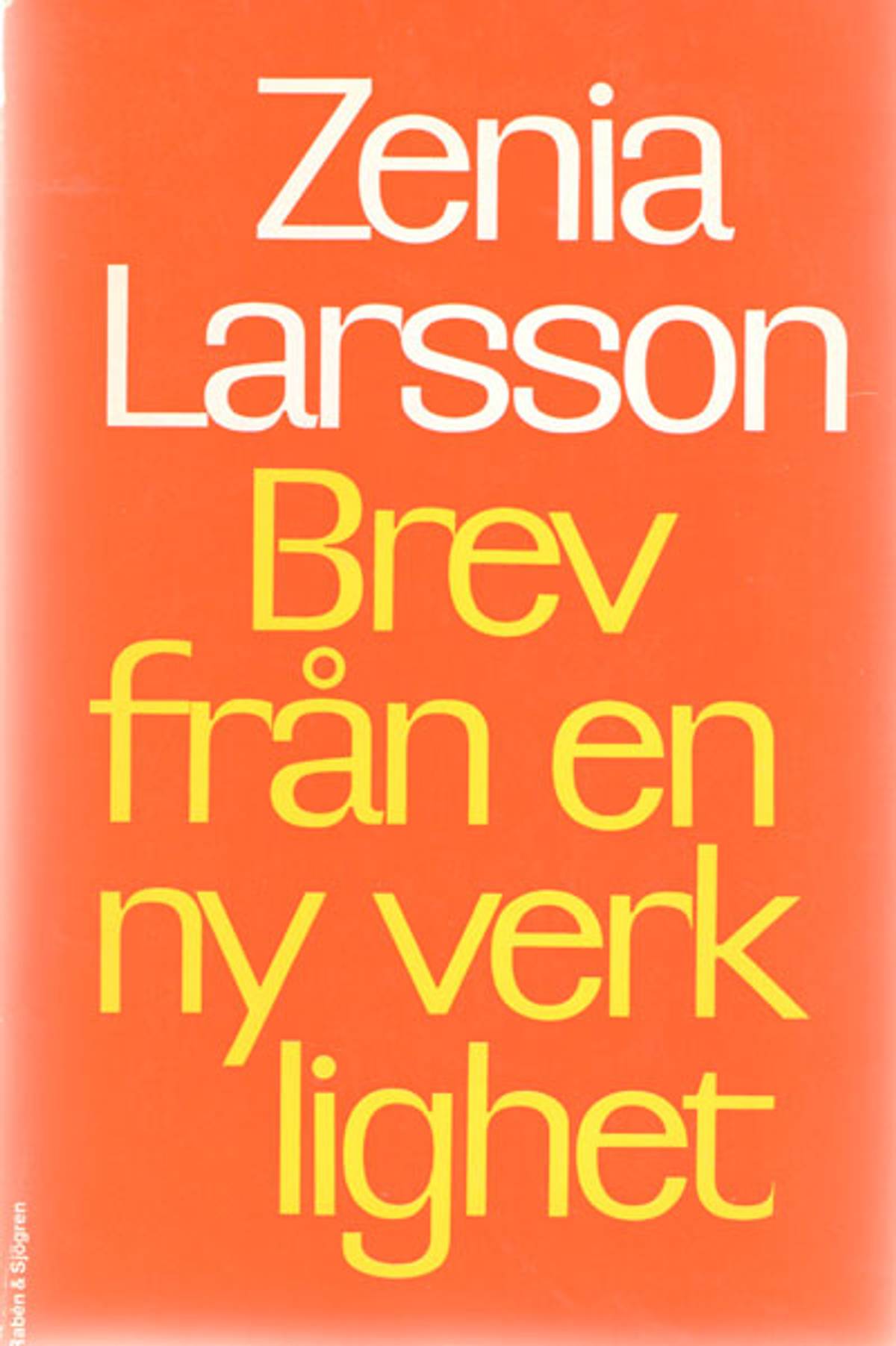
It is not surprising, then, that of the two women, Zenia appears initially to be more affected by what they had just lived through. She tries constantly to push the past out of her mind. She does not want to look back; she wants to move forward. In fact, that was her motive in accepting the Swedish offer of relocation and leaving Bergen-Belsen and Chava’s family, which had become her adopted family. Too much togetherness, too many bad memories of what they had all lived through. I am guessing that this is what she means when she writes in the introduction to Letters From a New Reality that she felt relieved to leave all the other survivors behind and make her way to Sweden alone. So determined is she to leave the past behind that she destroyed all letters as “unnecessary ballast,” except for Chava’s letters to her. “I thought I had succeeded in erecting an impenetrable screen between myself and a Europe that was still shaking from the chaotic aftermath of the war,” she writes. “When I left Bergen-Belsen, it was with a firm determination to draw a line over my whole past, forget everything and begin anew. This has not been possible. There are difficult moments. The past returns.”
She is also far angrier than Chava, at least superficially. She refuses to write to Chava while the latter remains in Germany, explaining in the first letter that she sends to her in Brussels, “I told you when we parted in Bergen-Belsen that I will write no letters to Germany, not even to you, nor will I have anything more to do with that country. When it comes to Germany, the only thing I want is revenge.”
Both women suffer from survivors’ guilt. Zenia torments herself for not having done more to prevent the suicide of her father in the ghetto, or the death of her beloved stepmother, who died just days after the liberation from eating tins of fatty meat distributed by the British forces who liberated Bergen-Belsen. Chava writes of her guilt at not comforting the poet Shayevitch, who was in love with her, when they were on their hellish cattle-car train ride to Auschwitz. “He wanted just one comforting word, and I refused to give it to him. I cannot forgive myself,” she tells Zenia. Shayevitch was later gassed at Dachau.
Chava also harbors what she calls “a secret guilt” with regard to Zenia, although her reasons are vague: “My memory has retained certain images which stand as a rebuke of my behaviour in the camps. Maybe you have harboured a secret grievance against me, but you were able to rise above it, and thanks to that, those hellish days didn’t kill our friendship.”
Zenia responds: “You write that during the war you so often left me to my fate, forgot me and let me struggle alone. Perhaps you did at times, but that is not the whole truth.” She then reminds Chava of the incident in the Sasel labor camp when a kapo slapped Zenia as the women inmates were scrambling for their ration of soup. Without stopping to think, Chava slapped the kapo in retribution, an act of disobedience so serious that it could have resulted in Chava’s being sent to the gas chambers, along with the rest of her group. Instead, Chava’s slap brought the kapo back to a sense of her own morality. After a day’s reflection, during which Chava and her group of five were separated from the others in their barrack, the kapo relented: “You were right to slap me,” she told Chava. “I have turned into an animal.”
From that time on, Chava, her mother, sister, Zenia, and her stepmother received an extra ration of soup every day. (This incident inspired one of Chava’s most complex stories, “Edgia’s Revenge,” which is told from the point of view of a kapo.)
***
As time goes on the focus of the letters shifts away from the war. Both women had literary ambitions when they were young, and they continually inquire about each other’s creativity. Before their incarceration in the ghetto, Chava had written poetry, Zenia prose, and they had been each other’s first and most avid readers. This continues in the letters. “Are you writing?” Zenia asks Chava, reminding her of how much comfort she had derived from the poems that Chava read aloud to her in the ghetto.
Both are very aware of the problems of being female in the mid-20th century and wanting to lead a creative life. When they were younger they had formed the Free Woman’s Club, which had just the two of them as members. Zenia writes of a friend in Sweden who had ambitions to become a composer, but instead got married and had a child. The care of her husband and baby now totally preoccupies her friend’s mind and she has no time to devote to her music. Is this the way it must always be for women, Zenia wonders. Must a woman always give up her own artistic ambitions for marriage and motherhood? Is it not possible to have both?
Chava too has worries. The exigencies of earning a living in a land where she does not speak the language overwhelm her. She cannot write. She is ecstatic when, after many delays, Henekh, who had remained in Germany to attend medical school, joins her in Brussels and they begin their married life together. But what will happen if she becomes pregnant? A baby would be a terrible calamity at this stage in her life. Neither she nor Henekh is making enough money and then there is the problem that she would have even less time for creative work. How to juggle her various employments in Brussels with raising a child?
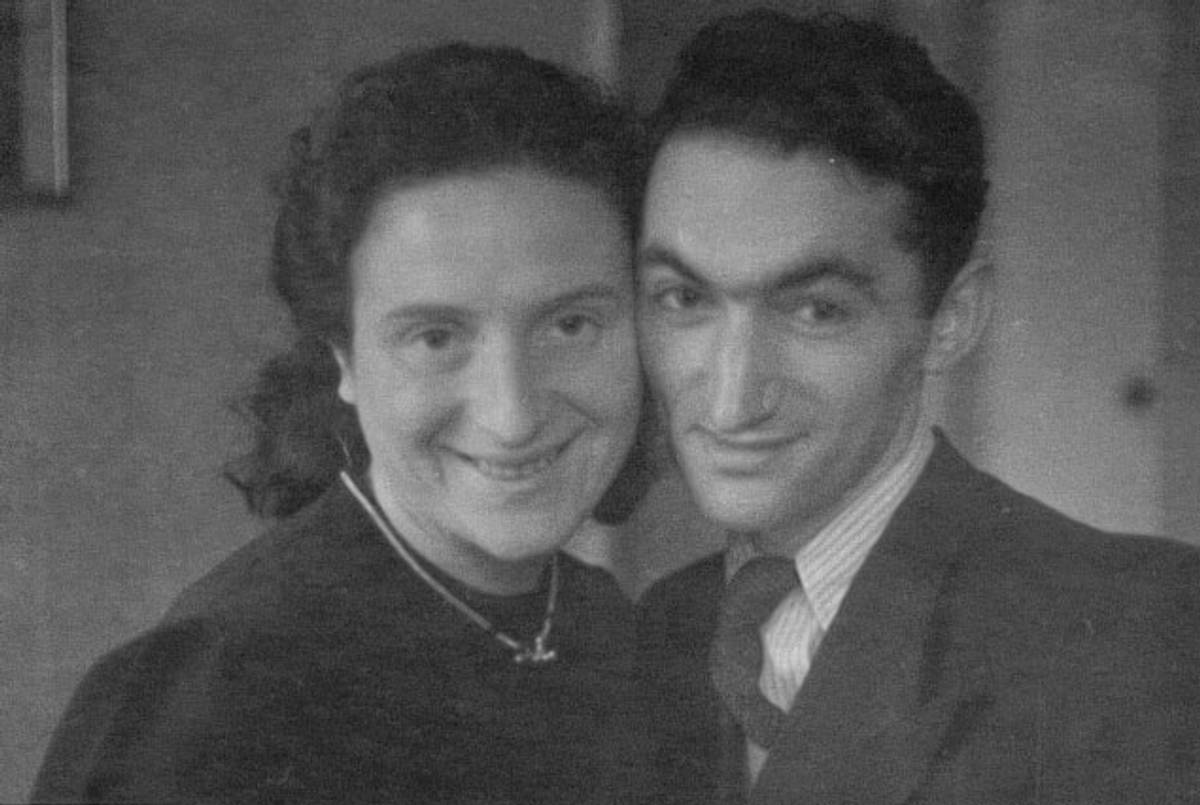
These are the kinds of problems that many ambitious women have faced. What differentiates Zenia and Chava from others like them is that the experiences they have lived through make creativity an imperative as a way of exorcising and coming to terms with the past. And their lives are complicated by other issues. One of the most poignant passages in the letters occurs when Zenia meets the man whom she will marry, Per-Axel Larsson. He is not Jewish, but she loves him: “If I lived with him,” she writes, “would it be a sin? Are my feelings for him a crime against my loved ones who perished because they were Jews? Write to me, Linn; perhaps it will help me to see more clearly.”
In the meantime, despite their worries about the impossibility of simultaneously living a normal woman’s life and being creative, both women forge ahead with their artistic endeavors. Zenia is accepted into the Swedish Academy of Art and becomes a sculptor. In 1946, Chava publishes her long poem, “Di Balade fun Nekhtikn Vald” [“The Ballad of Yesterday’s Forest”] in the New York Yiddish journal Di Zukumft and begins her literary career. Zenia, whose Yiddish is not fluent, writes of how she reads the poem slowly, but with great pleasure. “I find you in every line,” she writes.
When Chava moves to Canada in 1950, the correspondence between the two women becomes more erratic. Neither is a particularly diligent letter-writer and life events hamper the exchange of letters. Chava gives birth to her daughter at the same time as she is forced to deal with the illness of her mother, who arrives in Montreal in 1951, suffering from the cancer that will kill her eight years later. Working at her various jobs, caring for her mother and taking care of her new baby leave Chava with very little time for letter writing, although she persists. Of the two, Chava is the more prolific, writing two letters to Zenia’s one. What Chava does not tell Zenia is that in what little spare time she has, she has been at work on a novel, a trilogy about life in the Lodz ghetto.
Zenia has been a poor correspondent from the start. When she does write her letters are long and detailed, but she is busy with her own life, her marriage, her sculpting. She learns that she cannot have children, which is a severe blow. To fill the void, she and Per-Axle adopt a persnickety dachshund and many of Zenia’s letters from this period are taken up with descriptions of the dog’s doings, possibly as a counter to Chava’s rapturous descriptions of her new motherhood. What Zenia does not tell Chava is that she too has been writing; in fact, she has been at work on a novel, a trilogy about life in the Lodz ghetto.
Thus, independently, both women come to write about their experiences during the Holocaust and both choose fiction as a way of recreating the past. Curiously, they both conceive of their novels in three volumes. For both of them, the novels serve as an exorcism and a memorial. But while Chava ambitiously seeks to memorialize the entire Jewish community of Lodz, Zenia’s original intention is to memorialize her father, who died in the ghetto. Despite this divergent focus, Zenia speaks for them both when she writes: “The book is simply the monument I wanted to erect to the memory of our loved ones, to speak for those who can no longer speak for themselves. Such a monument I once wanted to carve in stone with my own hands. So now I have written a book instead.”
Zenia’s trilogy has a single protagonist, Paula Levin, who is a stand-in for the author and whose experiences follow closely the outlines of Zenia’s own life. The first volume is called Shadows by the Wooden Bridge, a reference to the wooden bridge that the Nazis erected to link the two sections of the Lodz ghetto. The novel tells the story of the inhabitants of one building on Marynska Street in the Lodz ghetto—the street on which Zenia and her family actually lived—and follows their fate through all the years of the ghetto’s existence. The plot focuses on the interaction of the heroine with the man who is modeled on Zenia’s father, a barber, described by Chava in her memoir of Zenia, as “a type of proletarian intellectual whose hobby was writing poetry.” Zenia’s father contracted tuberculosis in the ghetto and killed himself so as not to deprive his wife and daughter of his rations. This first volume of Zenia’s trilogy encompasses all four and a half years of the Lodz ghetto’s existence, culminating in its liquidation. It includes a description of Chaim Rumkowski, the Jewish boss of the Lodz ghetto, who had the power of life and death over its inhabitants, although he is not one of the novel’s main characters.
By contrast with the multi-year span of Shadows by the Wooden Bridge, the second volume of Zenia’s trilogy, Long is the Dawn, covers only two months, beginning with the “unforgettable” (Zenia’s word) 15th of April 1945, the day of Bergen-Belsen’s liberation by the British, and ending when Paula Levin leaves the camp for Sweden. What Zenia hopes to convey in this volume is “a picture of the human being’s gradual awakening from absolute zero, and that this awakening takes place in the immediate vicinity of the Bergen-Belsen death camp.”
The last volume of Zenia’s trilogy follows her protagonist through all her travails as an immigrant trying to adjust to life in Sweden. Zenia writes that this last volume, called Meeting Life, is her favorite because it deals with her happy ending in Sweden, which she describes as “this calm, wonderful country, where I began to believe in the future again.” This is the only novel in the trilogy for which Zenia did research in libraries in order to document what had happened in Sweden during the war years, and how the Swedes reacted to the arrival of the Jewish survivors.
Chava’s The Tree of Life covers much the same territory as Zenia’s first volume, Shadows by the Wooden Bridge, but it does so in much greater detail and particularity. Her trilogy’s overall conception is both broader than Zenia’s and more narrow, in that the narrative never moves beyond the ghetto. Instead, it attempts to capture within the span of its three volumes, the life of an entire doomed Jewish community. Volume One begins on New Year’s Eve 1939, nine months before the German invasion of Poland, when life was still “normal.” This establishes the Jewish community of Lodz as it was before the war. That volume ends on New Year’s Eve 1940, four months after the Germans invaded Poland. Volume Two deals with the years 1940–42, when the Nazis set up the ghetto and the deportations began. Volume Three encompasses the years 1942–44 when conditions in the ghetto deteriorate even further as deportations intensify and starvation and disease claim more and more lives. All three volumes of Chava’s trilogy are thus focused on the Lodz ghetto and its population, ending with the liquidation of the ghetto in August 1944.
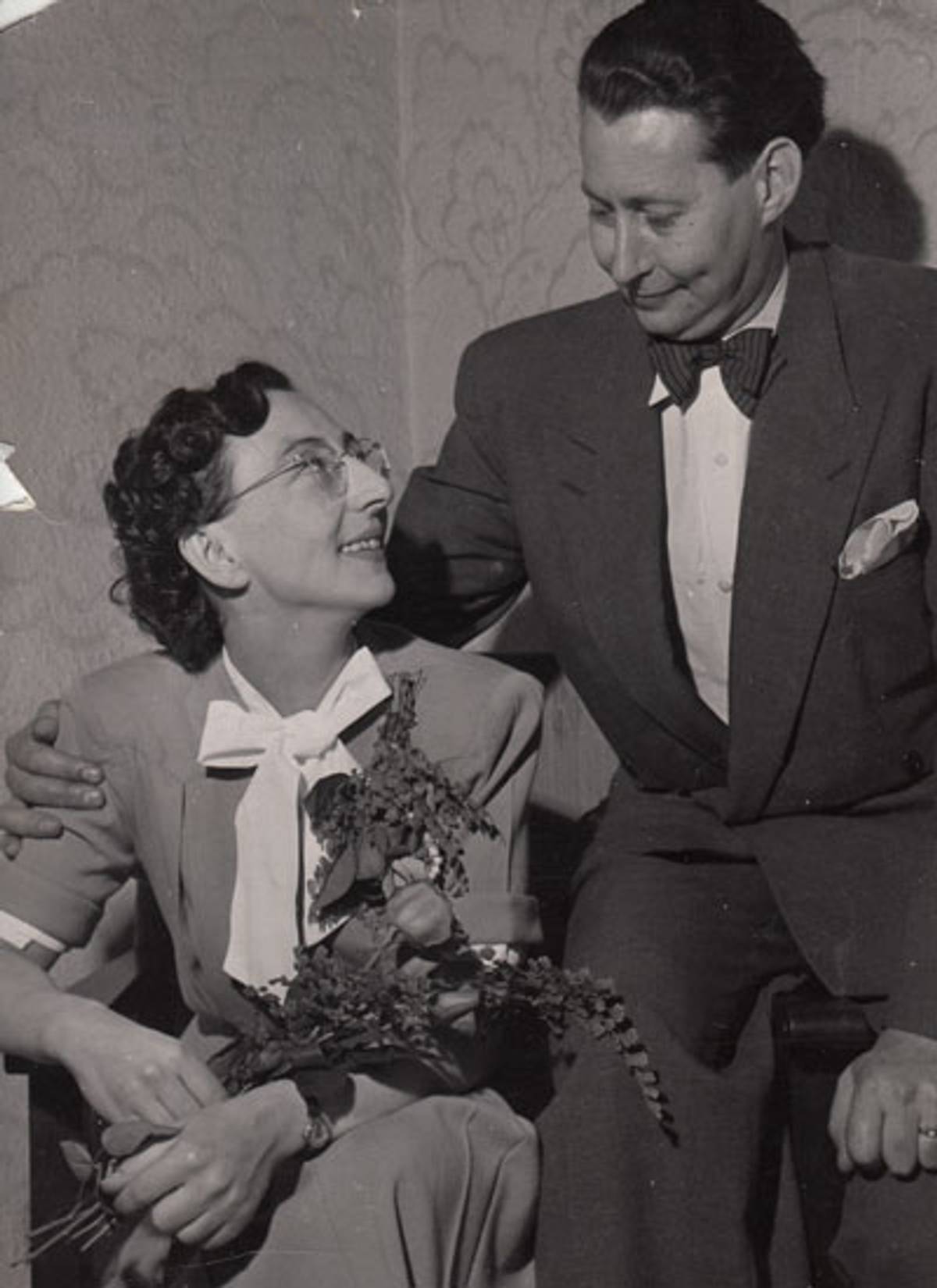
Like Zenia, Chava creates an alter ego for herself in the person of Rachel Eibushitz, a politically committed high school student. But Rachel is only one of The Tree of Life’s ten protagonists, a diverse group, who run the gamut from impoverished carpenters to wealthy factory owners, from assimilationist Polish school teachers to fanatical Yiddishists, from the Jewish thugs and prostitutes of the Lodz underworld to the educated members of the intelligentsia. Because the ten major characters of The Tree of Life come from all walks of life, the novel recreates, in all its complexity, an entire Jewish ghetto community, capturing in detail the everyday life in the ghetto workshops and food distribution centers, the ideological responses of the various political parties—the Zionists, Communists and Bundists—and the Lodz ghetto’s artistic community, of which Chava had been a member. Like Zenia, Chava writes about Rumkowsky, the puppet boss of the ghetto, but Chava’s Rumkowski is not a distant ominous presence, as he is in Zenia’s novel. He is, in fact, one of the ten protagonists of The Tree of Life, observed up-close, as Chava struggles to get under his skin, to imagine what made him tick.
Perhaps the most significant difference between the two trilogies is language. Unlike Chava, whose attitude towards Canada was always ambivalent, Zenia embraces Sweden with all her heart and becomes a true Swedish patriot. She writes her novels directly in Swedish, because she dislikes Polish, although it is her first language; it reminds her too much of the past. But Swedish is a language that she has only learned as an adult, without formal instruction, so she never feels that she has mastered it. She complains to Chava that her writing is full of mistakes in grammar, syntax, and vocabulary. It is her husband, Per-Axel, who corrects her Swedish, retypes her manuscripts, argues with her over words and phrases, and generally plays the role of editor, translator, and critic.
‘You are the only person who binds me strongly to life. A friendship like ours can exist only once. For me, this is the only point of light in my present.’
Zenia envies Chava the ability to write in Yiddish: “What a thing it is to have a mother tongue at your disposal, to own your own language and use it as an instrument you have mastered. You have everything at your command; you need only pick from abundance. Whereas I have one single instrument, with which I must try to represent an entire symphony orchestra. I sit down at the typewriter, hopelessly aware of my linguistic homelessness.” When Zenia announces the publication of her novel in 1961, Chava writes: “Who could have imagined this—that you will one day write something that I won’t be able to read! I see in this a symbol of that whole chaos that we lived through. Such are the consequences.”
The consequences are more severe than either of them realizes. Chava may have an advantage in being able to write in Yiddish, a language that she knows, “like the map of my own heart,” but it is Zenia who, from a reputational point of view, is more successful. Because it is in Swedish, Zenia’s trilogy is accessible to non-Jewish Swedes, one of whom, the celebrated Swedish author, Johan Borgen, writes a rave review of the first volume of Zenia’s trilogy in the pages of Expressen, Sweden’s largest newspaper. From then on, Zenia’s books will become known to the Swedish public, who value them as a testament to the recent past and turn Zenia Larsson into an important literary figure in Sweden.
In contrast, because of troubles in her own life, the breakdown of her marriage, the need to raise two children, Chava’s novel, which was begun in Brussels in the late 1940s, will not be published until 1971, and then only in Yiddish. And because it is written in Yiddish, it is accessible only to Jews; and then only to those Jews who know Yiddish. The publication of The Tree of Life was treated as a major event in the Yiddish-speaking world and its author was flooded with mail and showered with prizes. But knowledge of the novel’s existence remained within this relatively small community. Chava could not find a publisher for the English translation until 1985, nearly 15 years after its Yiddish publication. Zenia’s novel, on the other hand, while enjoying a large readership in Sweden was never translated into English, and so, ironically, has fallen into even greater obscurity today than Chava’s Tree of Life, which was eventually published in English and Hebrew translations and has recently been published in Polish.
There are other linguistic ironies: that the two women, who were so close to each other, communicated in Polish, a language they both disliked, and that, as time passed, became ever more remote to them, because neither lived in a Polish-speaking country nor had Polish-speaking friends. They both complain about having to communicate in this language which they are forgetting. Worse, they cannot read each other’s works. The letters are filled with plans to meet, usually in Europe, and confessions about the fear of meeting. Zenia writes of her anxiety about meeting Chava’s children: “If we eventually meet, I will have to communicate with your children through an interpreter—have you thought about that, Linn? The thought does hurt.”
Despite these linguistic problems, the correspondence makes clear how important each woman was to the other. Zenia writes: “You are the only person, Linn, who binds me strongly to life. A friendship like ours can exist only once. For me, this is the only point of light in my present.”
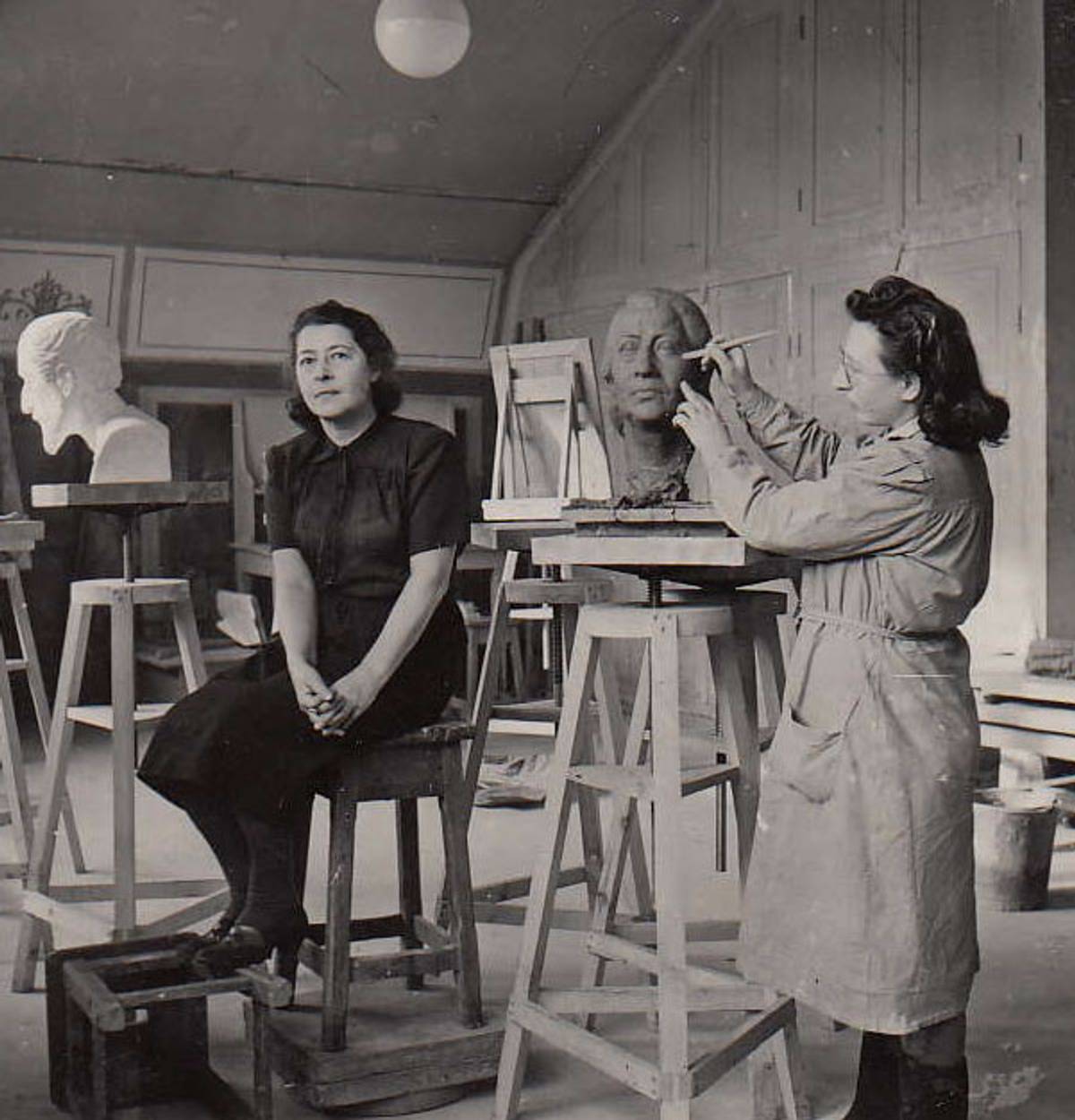
Despite these strong feelings of emotional dependence and attachment, the friendship eventually faded. Perhaps this was inevitable given the passage of time and how far away the two women lived from one another, which meant that they seldom met and so were not active presences in each other’s lives. But what really precipitated the decline was Zenia’s request for the return of her letters. This hurt Chava deeply. In an article about Zenia in the Yiddish literary journal, Di Goldene Keyt, Chava wrote: “Zenia’s request came as a terrible blow to me. I felt as though a part of my life was being ripped away.”
For her part, Zenia alludes to the pain caused by the letter exchange in her introduction to Letters from a New Reality: “The exchange of letters turned out to be more painful than I had anticipated—but then there was no way to start over. Something that probably had been coming for a long time had been completed and the letter exchange marked the end of an epoch—a contact that, with the exception of a few years’ interruption, comprised a quarter century.” In the packet of her letters that Zenia sent back to Chava there is one conspicuously absent: the one that contains Chava’s reaction to Zenia’s request for the return of her letters. Did Chava destroy it? Did Zenia deliberately not send it back? I will never know.
If life were fiction, then the story of this friendship would end right here, dramatically, with the return of the letters. But, in fact, the friendship did not end there. Zenia sent Chava a copy of her book when it was published, and Chava, finally understanding the reasons for Zenia’s request for the return of her letters was pleased and flattered that her friendship with Zenia would be immortalized in a book, even a book that she could not read. So their correspondence resumed, although with less frequency and intensity, until gradually it died out altogether.
Both women are now gone. Zenia died in 2007 and Chava in 2011. The letters, however, remain. And because they remain, they serve as a monument to an emotional attachment between two women writers, who had suffered through some of the most horrific events of the twentieth century and emerged with their humanity and ability to love intact. My favorite image of the two friends comes from Chava’s memoir, and it may serve as a symbol of their friendship. When the two were still schoolgirls in Lodz, Chava writes: “Any rain, especially a summer storm, always cheered us. We would hold hands, run out into the middle of the street, laughing, jumping up and down, and shouting loudly enough to outshout every clap of thunder.”
Goldie Morgentaler is the translator and editor of Chava Rosenfarb’s collection of short stories, In the Land of the Postscript: The Complete Short Stories of Chava Rosenfarb, published by White Goat Press.